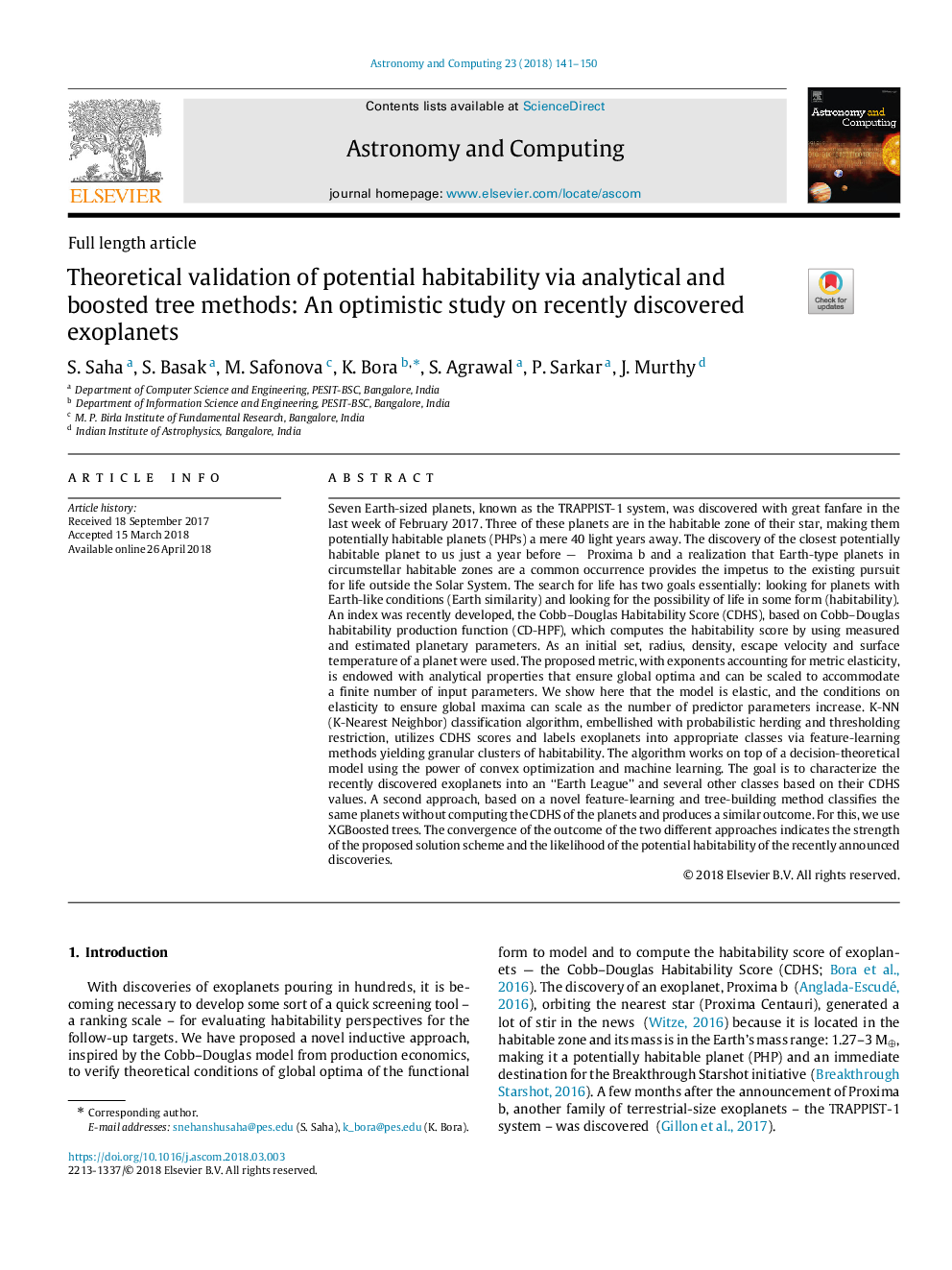| کد مقاله | کد نشریه | سال انتشار | مقاله انگلیسی | نسخه تمام متن |
|---|---|---|---|---|
| 6906008 | 1447048 | 2018 | 10 صفحه PDF | دانلود رایگان |
عنوان انگلیسی مقاله ISI
Theoretical validation of potential habitability via analytical and boosted tree methods: An optimistic study on recently discovered exoplanets
ترجمه فارسی عنوان
اعتبار سنجی نظری اعتقاد بالقوه از طریق روش های درختی تحلیلی و پیشرفته: یک مطالعه خوش بینانه بر روی زمین هایی که اخیرا کشف شده اند
دانلود مقاله + سفارش ترجمه
دانلود مقاله ISI انگلیسی
رایگان برای ایرانیان
موضوعات مرتبط
مهندسی و علوم پایه
مهندسی کامپیوتر
نرم افزارهای علوم کامپیوتر
چکیده انگلیسی
Seven Earth-sized planets, known as the TRAPPIST-1 system, was discovered with great fanfare in the last week of February 2017. Three of these planets are in the habitable zone of their star, making them potentially habitable planets (PHPs) a mere 40 light years away. The discovery of the closest potentially habitable planet to us just a year before - Proxima b and a realization that Earth-type planets in circumstellar habitable zones are a common occurrence provides the impetus to the existing pursuit for life outside the Solar System. The search for life has two goals essentially: looking for planets with Earth-like conditions (Earth similarity) and looking for the possibility of life in some form (habitability). An index was recently developed, the Cobb-Douglas Habitability Score (CDHS), based on Cobb-Douglas habitability production function (CD-HPF), which computes the habitability score by using measured and estimated planetary parameters. As an initial set, radius, density, escape velocity and surface temperature of a planet were used. The proposed metric, with exponents accounting for metric elasticity, is endowed with analytical properties that ensure global optima and can be scaled to accommodate a finite number of input parameters. We show here that the model is elastic, and the conditions on elasticity to ensure global maxima can scale as the number of predictor parameters increase. K-NN (K-Nearest Neighbor) classification algorithm, embellished with probabilistic herding and thresholding restriction, utilizes CDHS scores and labels exoplanets into appropriate classes via feature-learning methods yielding granular clusters of habitability. The algorithm works on top of a decision-theoretical model using the power of convex optimization and machine learning. The goal is to characterize the recently discovered exoplanets into an “Earth League” and several other classes based on their CDHS values. A second approach, based on a novel feature-learning and tree-building method classifies the same planets without computing the CDHS of the planets and produces a similar outcome. For this, we use XGBoosted trees. The convergence of the outcome of the two different approaches indicates the strength of the proposed solution scheme and the likelihood of the potential habitability of the recently announced discoveries.
ناشر
Database: Elsevier - ScienceDirect (ساینس دایرکت)
Journal: Astronomy and Computing - Volume 23, April 2018, Pages 141-150
Journal: Astronomy and Computing - Volume 23, April 2018, Pages 141-150
نویسندگان
S. Saha, S. Basak, M. Safonova, K. Bora, S. Agrawal, P. Sarkar, J. Murthy,
